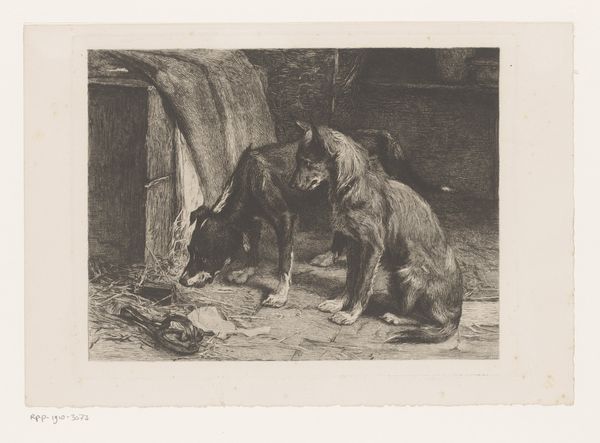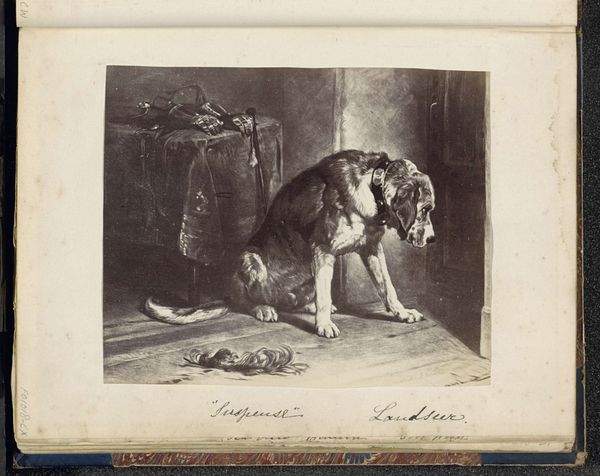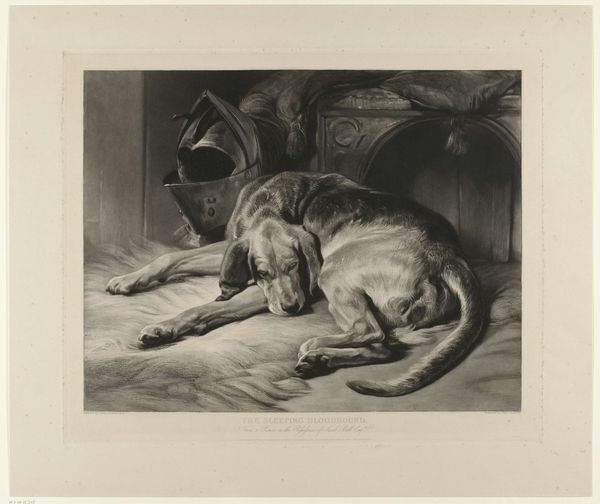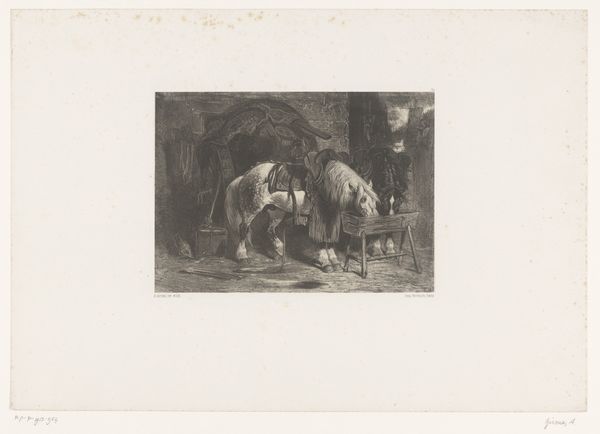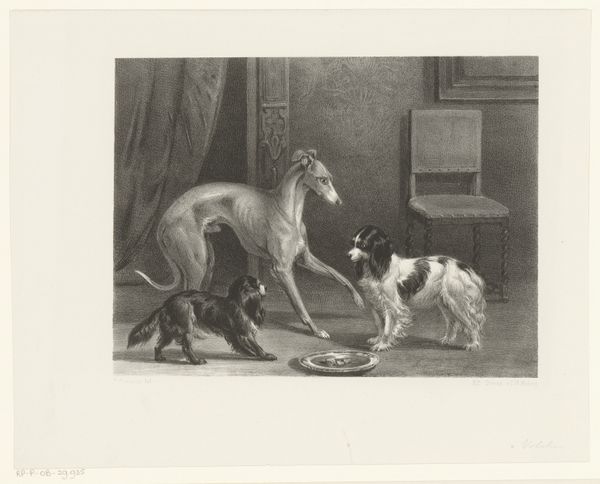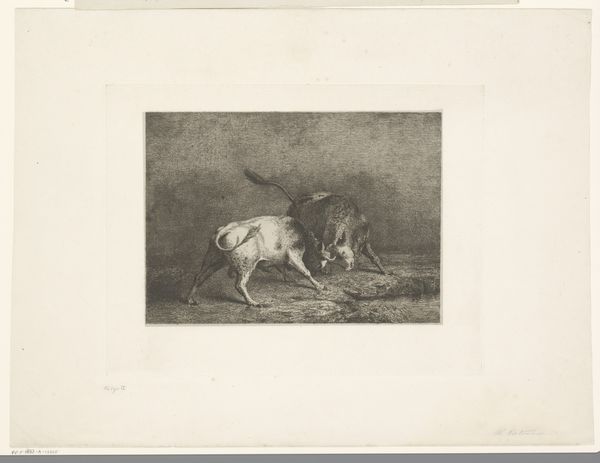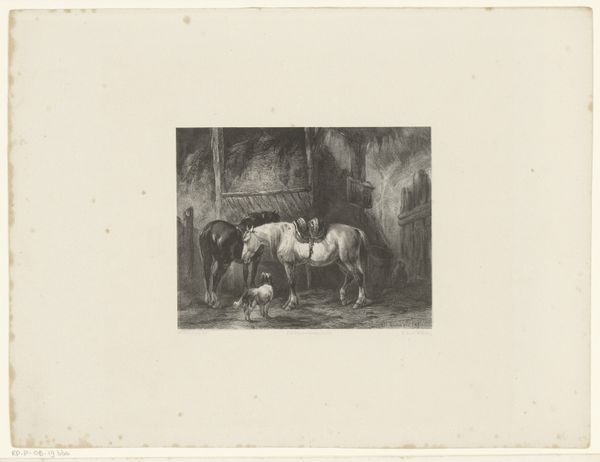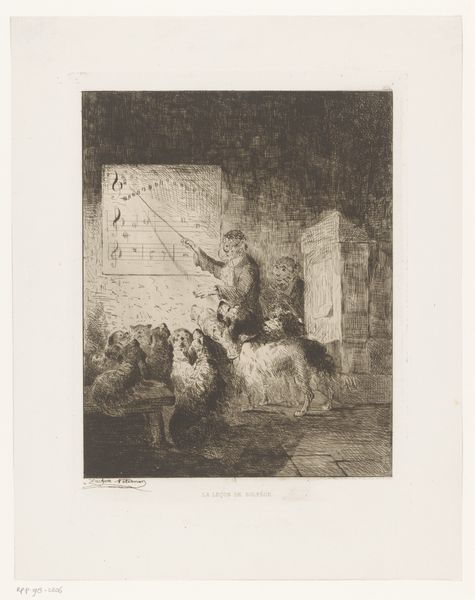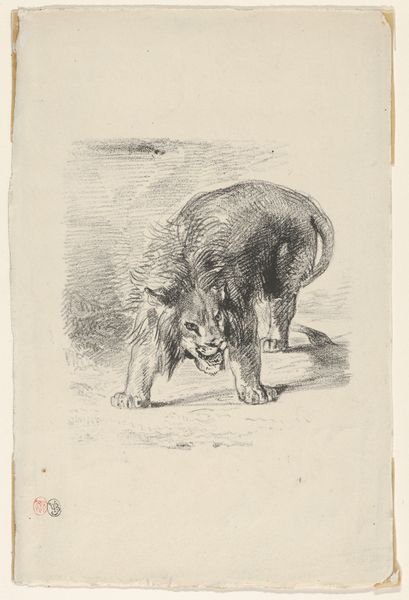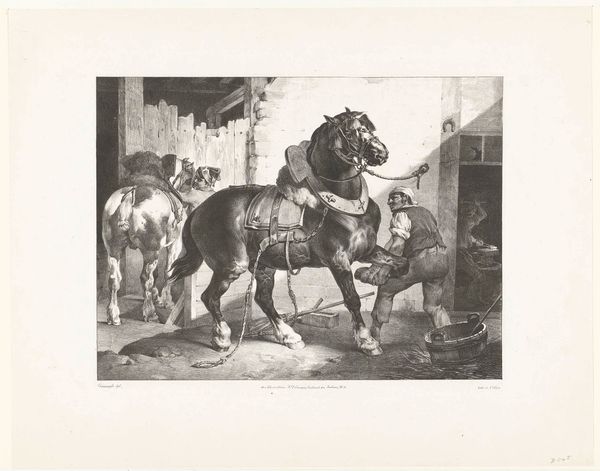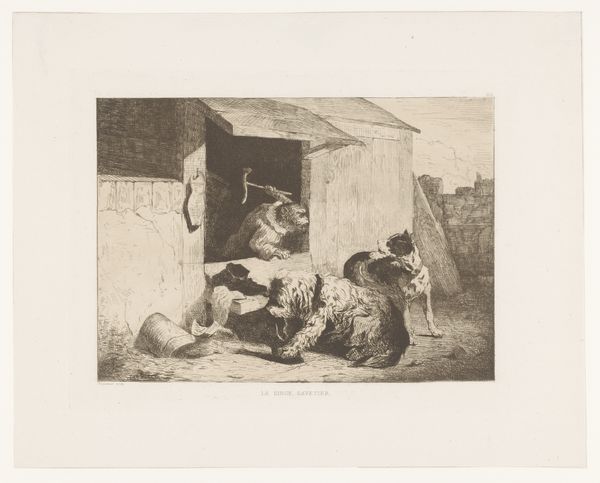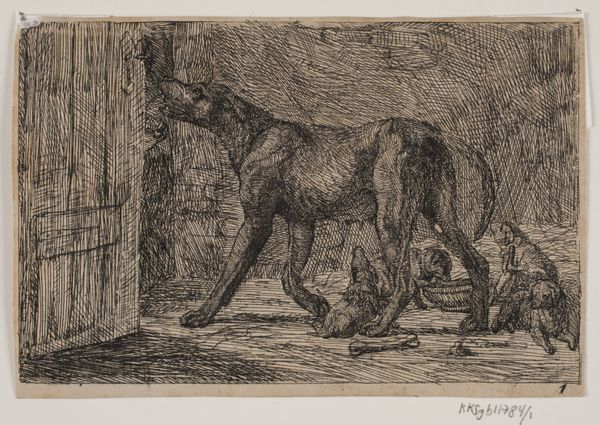
print, engraving
#
print photography
# print
#
dog
#
landscape
#
genre-painting
#
engraving
Dimensions: height 467 mm, width 580 mm
Copyright: Rijks Museum: Open Domain
Curator: Ah, yes, here we have an engraving from 1837, titled "Hond wacht bij een deur," or "Dog Waiting by a Door." It's the work of Benjamin Phelps Gibbon, known for his prints and genre scenes. Editor: What a soulful dog. I’m immediately drawn to his dejected posture and the somber lighting. It’s quiet, almost melancholic, and I can’t help but wonder what he’s waiting for. Curator: Indeed, the image evokes a particular feeling, doesn’t it? The setting is interior, a corner where we see a heavy, draped table and a closed door, amplifying the dog’s solitude. It suggests perhaps a wider narrative. Editor: Exactly! You can almost invent the story yourself, can’t you? It's like he's been left behind or forgotten, gazing with unwavering devotion at that closed door, waiting for his person to return. The contrast of the ornate furnishings with his humble presence adds to that feeling of abandonment. Curator: Right. Remember this piece reflects the rise of sentimentalism within the 19th century art market, emphasizing emotion and the idealization of domestic life. Animals, particularly dogs, were frequently used to convey virtues such as loyalty. Editor: Oh, without a doubt! Dogs became almost allegorical for fidelity. Look how deliberately the artist captures the dog’s forlorn gaze; it speaks volumes. Is that fallen game on the floor in front of the dog? Perhaps an unfinished hunt underscores that sense of being left behind? Curator: That’s a astute reading. The texture created by Gibbon’s engraving beautifully renders fur and fabric, intensifying the scene’s palpable texture and the weighty feeling in the room. Editor: I’m really struck how it’s not just about technical skill. This dog has character, presence… it transcends simple animal portraiture and reaches something more profound about hope and the patience of love. Curator: It reminds us about the long history of animal companions alongside humans, and it’s worth considering the cultural implications of the work given animal welfare in its time. Editor: So well said! In fact, I’m thinking about my own dog right now... Excuse me, I think someone’s waiting for me.
Comments
No comments
Be the first to comment and join the conversation on the ultimate creative platform.
